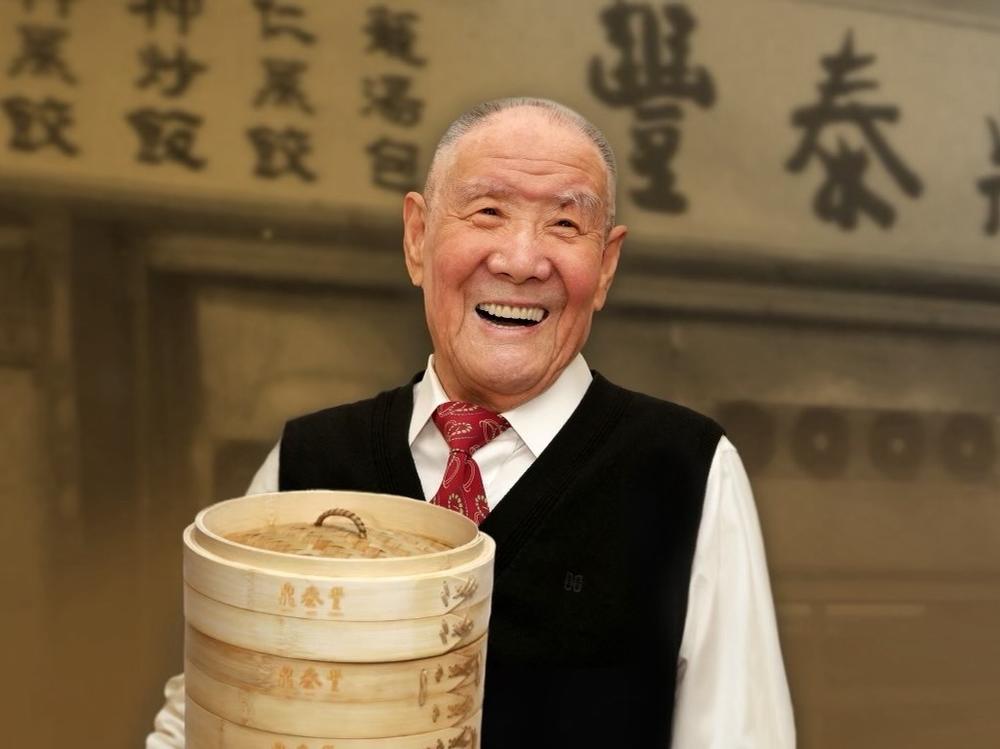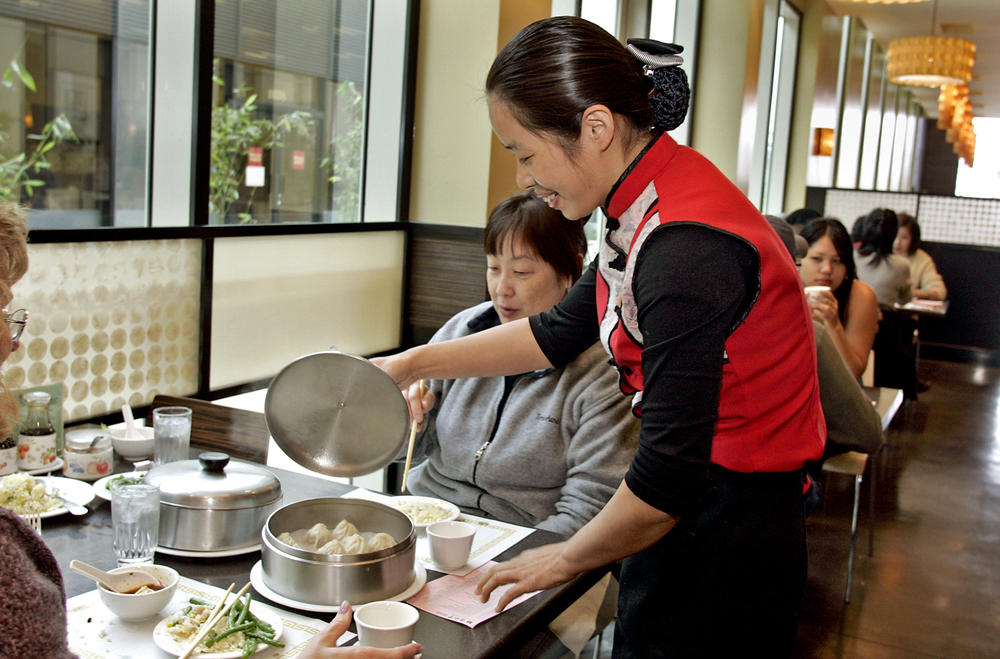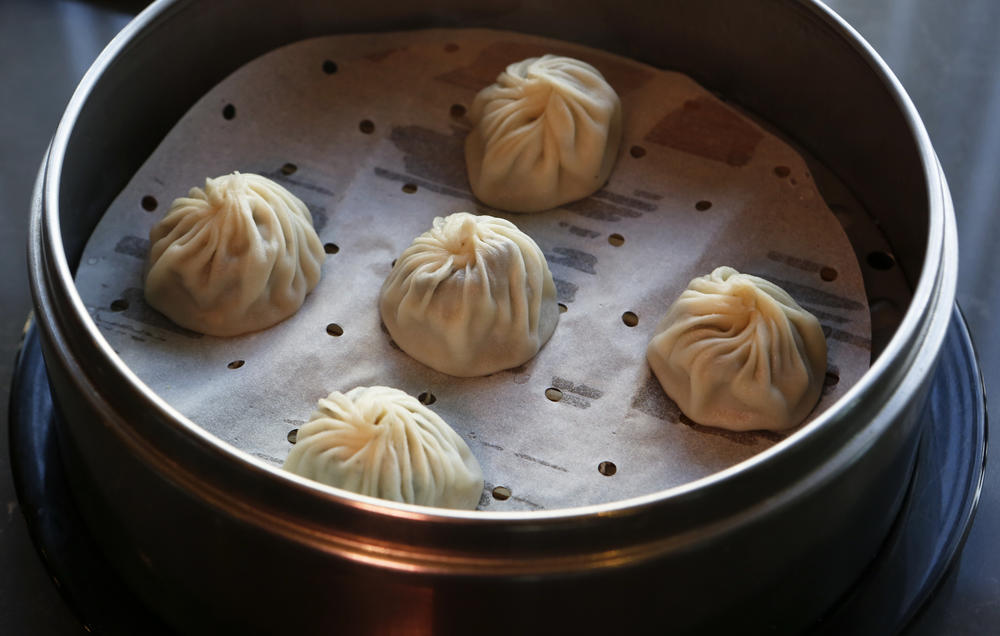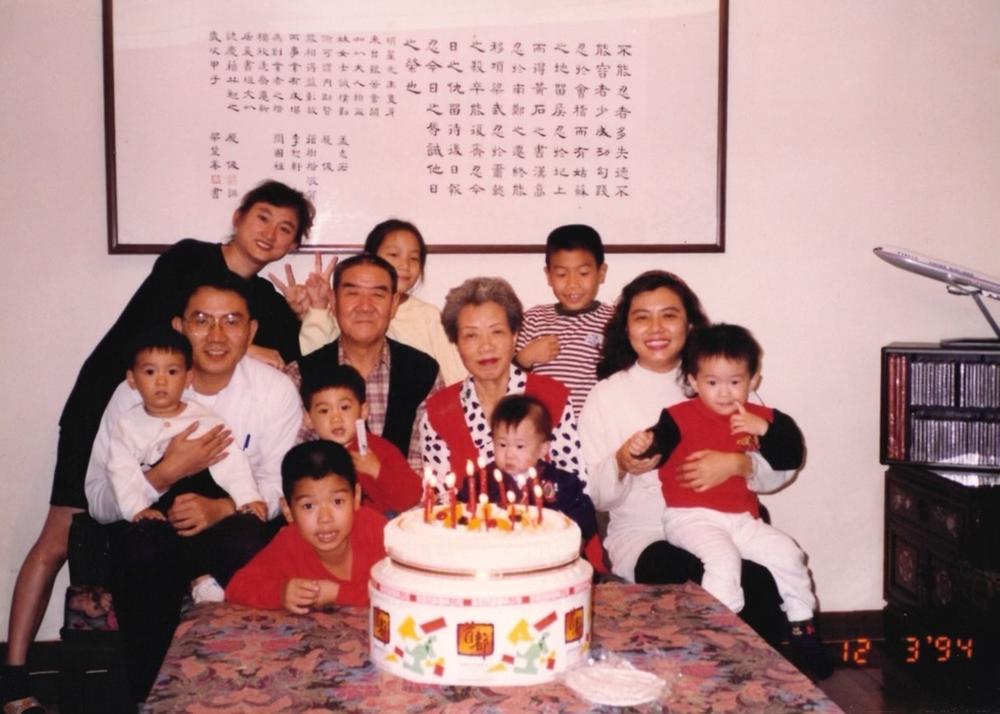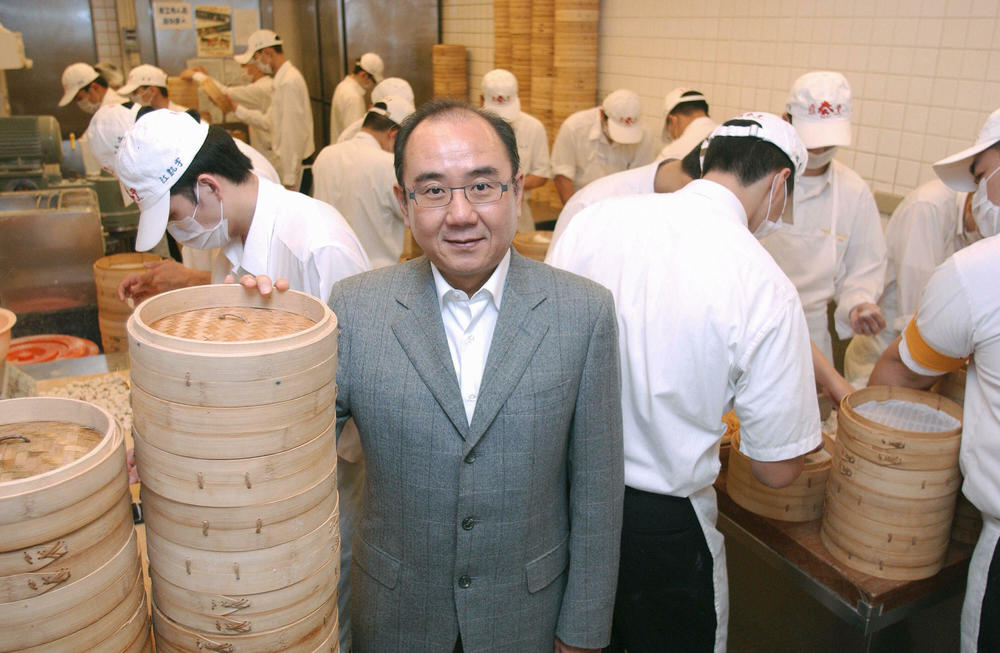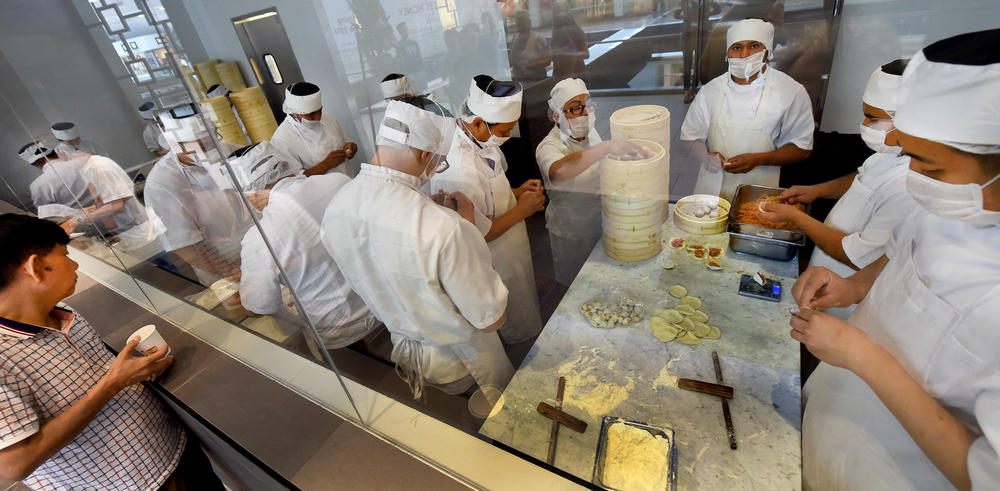Section Branding
Header Content
Yang Bing-Yi, patriarch of Taiwan's soup dumpling empire, has died
Primary Content
TAIPEI — Yang Bing-Yi, the co-founder of a famed Taiwan chain of soup dumpling restaurants, has died at the age of 96, the company announced in a statement on March 26.
Yang and his wife Lai Pen-mei started the Din Tai Fung restaurant in 1972, and grew their location in Taipei into a chain of more than 170 globally, popularizing piping-hot steamed soup dumplings in Taiwan and beyond.
In 2013, Din Tai Fung sold 28 million signature soup dumplings in Taiwan alone — an average of 76,000 dumplings every day. The private company was reported to have revenues of $150 million in 2021.
Yang's humble origins and rise to culinary fame closely track the turbulent history of post-World War II China and Taiwan. The restaurant he launched from Taipei paired Shanghai-style soup buns and Chinese regional cooking, epitomizing the expansive diversity of Taiwanese cuisine and its interplay with Chinese cuisine, even during periods of high political tension.
"Human beings are always drawing on tradition and integration, innovating and mixing, and Din Tai Fung has done that par excellence," says Fuchsia Dunlop, a food writer and cookbook author.
Yang started a new life in Taiwan at the end of China's civil war
Born in 1927 in the city of Taiyuan, in China's central Shanxi province, Yang never lost his heavy provincial accent. During his early teenage years, Japanese troops occupied his hometown for three years. After Japan's defeat in the Second World War, China's civil war engulfed his city.
Yang went by boat to Taiwan at the age of 21 — as company legend has it, with only $20 in his pocket — to join his uncle, who was already on the island. They were part of a massive exodus of up to 2 million Chinese refugees who fled the mainland for Taiwan during the end of the Chinese civil war.
Few ever went back. Yang was forced to start life over.
"I came to Taiwan when I was 21. I didn't attend school. I don't understand [politics], and I'm not knowledgeable," Yang told guests at a gastronomy event in 2007.
In Taipei, Yang met Lai, who would become his wife. They dated in secret for years before marrying. Like many mainland migrants who came to Taiwan in the 1940s and 1950s, Yang was already married — but with all exchanges cut off between China and Taiwan, he was unsure if he would ever see his first wife again or be able to confirm if she was even alive.
Yang initially worked in Taipei as a delivery man, then branched into selling cooking oil in 1958 — a line of business that was disrupted with the advent of selling oil out of tin cans. Seeking additional income, he and Lai began informally using half of their Taipei storefront to sell noodles — a craft Yang knew well, having learned the dough-based culinary skills of his native Shanxi province as a child.
"The first store was a small, earthen house with red tiles," Yang told a Taiwanese television station. "We worked and slept there... I was on call all the time. I did not take one step away."
Later, at the suggestion of another restaurateur and family friend, Yang and Lai started selling steamed soup buns, or xiaolongbao, a variation of dumplings closely associated with the city of Shanghai, and known for mixing gelatinized cubes of pork broth in its filling that melts when steamed.
The small buns are a technical challenge to make, requiring skilled cooks to fill stuffing and savory broth cubes into gauzy dumpling skins. Proper soup dumplings must fit at least 16 folds on top. Din Tai Fung requires its cooks to do two more than that — 18. The dumplings are prized for their ultra-thin skins and the rich broth inside.
Many of their early customers were former soldiers who had fled to Taiwan
Business was brisk, but the couple briefly had to stop selling soup dumplings after two years, when their Shanghai-born cook abruptly announced he was retiring.
Yang and Lai were inspired to bring back the soup dumplings after a loyal customer — a former soldier who had retreated to Taiwan in an exodus of troops in 1949 — told Yang that Din Tai Fung's discontinued xiaolongbao had reminded him of the home in China he would never see again, according to a live-action movie based on the couple's life.
The couple sought out a Shanghai-trained chef in Taipei named Cai Shuixin to develop Din Tai Fung's signature soup dumpling recipe.
For nearly two decades, Yang and Lai fed mostly local Taipei customers their standout soup dumplings. Many of their first customers were former soldiers who had fled to Taiwan and who lived near the restaurant in a government settlement built for military employees and their families.
"I couldn't believe how great the food was. It was just fantastic in its simplicity and taste," says Ken Hom, an American chef and writer who was brought to the first Din Tai Fung restaurant by fellow chef and cookbook writer, Taiwan's Fu Pei-mei, in 1992.
Hom wrote an ebullient article about the restaurant for the New York Times in early 1993, bringing the small outfit to international attention. Yang later had the article engraved on bronze plaques used to decorate some of Din Tai Fung's locations.
Global expansion began in the late 1990s, and then came Michelin stars
In 1995, the eldest of Yang and Lai's five children, their son Yang Ji-Hua, took over as head of the restaurant chain. Lai died in 1996 at age 63.
"They have just perfected standardization and used all the kind of rigor that you'd expect from a global fast-food chain, but applied it to something that is still handmade with very good ingredients and is a sort of premium product," says Dunlop.
The consistent quality of food and level of service led to an explosion in popularity and worldwide expansion, including in the United States, starting in the late 1990s. Michelin awarded Din Tai Fung's Hong Kong branch a one-star rating five times.
"When the first Din Tai Fung opened in Los Angeles, most people had no idea what a soup dumping was. It kind of blew everyone's mind in America," says Clarissa Wei, a Taipei-based writer and author of Made in Taiwan, a Taiwanese cuisine cookbook.
Yang installed glass panels in many of his restaurants, so that diners could view dozens of cooks clad in pressed white uniforms and chef hats deftly making their meals, meticulously weighing each piece of soup dumpling dough and filling. Every Din Tai Fung xiaolongbao must weigh exactly 21 grams, about three-quarters of an ounce.
"Watching these chefs make these foods and wrap meat in a very delicate, thin wrapper, sort of gave people an appreciation that they had never before for something as simple and as basic as a dumpling," says Wei.
As Din Tai Fung grew, it expanded its menu as well, incorporating non-dumpling dishes that drew on China's southern Jiangnan and Sichuan cooking styles.
But the signature dish remains the soup dumplings, served on steaming bamboo trays, each perfectly uniform bun made by scrunching up a paper-thin layer of dough encasing the broth and filling inside.
"God is in the details and that's where [Yang] excels. He took one thing and he perfected it," says Hom. "And it is that obsessiveness that is at the core of Din Tai Fung's success."
As Din Tai Fung grew, Yang made few public appearances. But he did appear once on television to teach people how to eat soup dumplings: Bite first into the skin; delicately slurp up the hot broth that spills out — but careful! Don't scald yourself. Then, finally, eat the bun.
Copyright 2023 NPR. To see more, visit https://www.npr.org.
